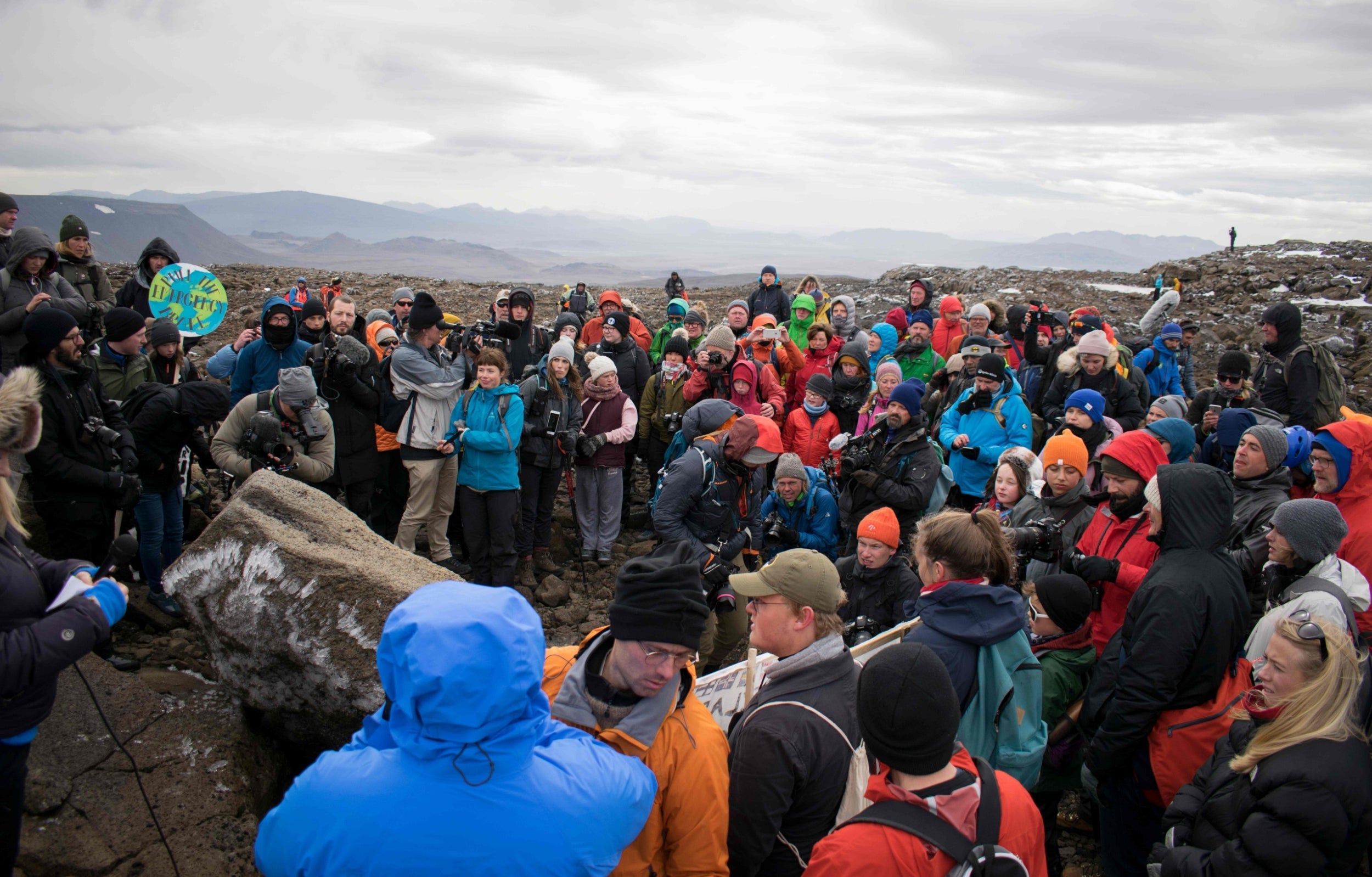Iceland holds funeral for giant glacier that melted after record heatwave
All of Iceland’s ice masses expected to disappear within 200 years

Your support helps us to tell the story
From reproductive rights to climate change to Big Tech, The Independent is on the ground when the story is developing. Whether it's investigating the financials of Elon Musk's pro-Trump PAC or producing our latest documentary, 'The A Word', which shines a light on the American women fighting for reproductive rights, we know how important it is to parse out the facts from the messaging.
At such a critical moment in US history, we need reporters on the ground. Your donation allows us to keep sending journalists to speak to both sides of the story.
The Independent is trusted by Americans across the entire political spectrum. And unlike many other quality news outlets, we choose not to lock Americans out of our reporting and analysis with paywalls. We believe quality journalism should be available to everyone, paid for by those who can afford it.
Your support makes all the difference.Iceland held a funeral for its first glacier lost to climate change on Sunday.
Amid poetry, moments of silence and political speeches about the urgent need to fight climate change, Icelandic officials, scientists, activists and others bade goodbye to the Okjokull ice sheet, in west-central Iceland.
According to satellite images from the NASA Earth Observatory, the glacier appeared as a solid-white patch in 1986, and Icelandic geologist Oddur Sigurðsson said it used to stretch six square miles (15 square kilometres).
A geological map from 1901 estimated Okjokull spanned an area of about 38 square kilometres (15 square miles).
But a NASA image from 1 August this year shows that only small dashes of white ice remained.

Mr Sigurðsson pronounced Okjokull dead about a decade ago after it melted throughout the 20th century. In 2014, it no longer fulfilled the criteria to be classified as a glacier.
Mr Sigurðsson said that while it was Iceland’s first glacier to disappear, all of the nation’s ice masses will be gone in 200 years.
“There is no longer any doubt that the climate in the Arctic is changing markedly and rapidly,” said Minik Rosing, professor at the University of Copenhagen.
“All of the Nordic countries comprise Arctic territories, where climate change has gone from theoretical predictions of the future to everyday reality,” he said.
On Sunday, about 100 people made a two-hour hike up a volcano to the made-for-media memorial for Okjokull.
Mr Sigurðsson brought a death certificate, while residents reminisced about drinking pure water thousands of years old from the glacier.
“The symbolic death of a glacier is a warning to us, and we need action,” former Irish president Mary Robinson said.
“We see the consequences of the climate crisis,” Icelandic Prime Minister Katrin Jakobsdottir said. She said she will make climate change a priority when Nordic leaders and German Chancellor Angela Merkel meet in Reykjavik on Tuesday.
“We have no time to lose,” she added.
“I know my grandchildren will ask me how this day was and why I didn’t do enough,” said Gunnhildur Hallgrimsdottir, 17.
Children installed a memorial plaque to the glacier.
It reads: “Ok [Okjokull] is the first Icelandic glacier to lose its status as a glacier.
“In the next 200 years all our glaciers are expected to follow the same path.
“We know what is happening and what needs to be done,” it continues, addressing future generations. “Only you know if we did it.”
Additional reporting by Reuters and AP
Join our commenting forum
Join thought-provoking conversations, follow other Independent readers and see their replies
Comments